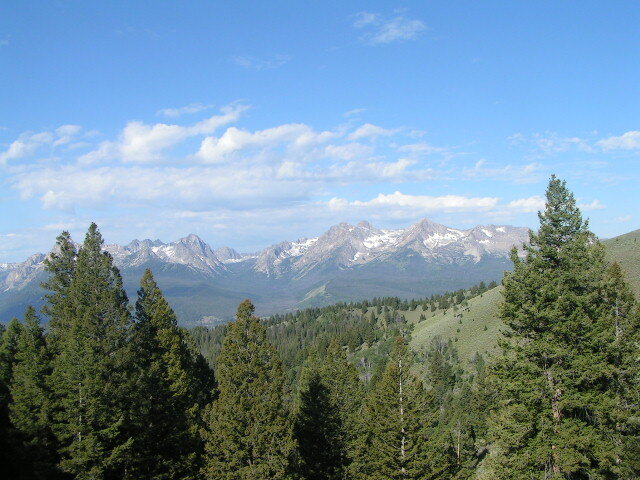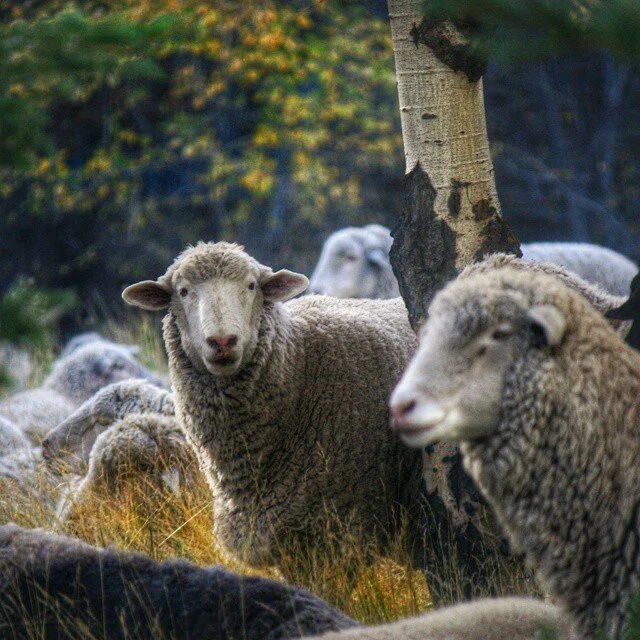Mission Statement
The Wood River Wolf Project promotes the coexistence of livestock and wolves by proactively using nonlethal measures to prevent depredation. The project is managed by the International Wildlife Coexistence Network, a 501c3 organization based in Idaho.
The Wood River Wolf Project began in 2008 as a field study. Our short-term goal was to determine if nonlethal methods could effectively deter wolves from preying on livestock in a large-scale mountainous landscape containing tens of thousands of sheep during the summer and early autumn grazing season.
The project area is a “worst-case” scenario, as native predators kill more sheep than other types of livestock. When we began in 2008, this large-scale study had never been tried. Even the wolf managers and scientists thought we would fail. That was 17 years ago. Since then, we have not only succeeded but also proven that our methods are at least three times more effective than traditional lethal control measures.
And we’re still improving on them.
Historic Background
In the 1930s gray wolves (Canis lupus) were almost eradicated from the lower 48 states, mainly to protect livestock producers from the threat of depredation. However, in 1974, wolves gained protection under the U.S. Endangered Species Act (ESA). At that time, there was evidence that wolves were crossing from Canada into northwest Montana. It wasn’t until the mid-1980s that the first litter of pups would be documented in Montana. These wolves, called the Magic Pack, were the first documented family of wolves to return to the US Rockies. In order to enhance recovery of wolves, 66 were reintroduced to central Idaho and Yellowstone National Park in 1995 and 1996. The wolves in Idaho were managed by the U.S. Fish and Wildlife Service and the Nez Perce Tribe, and those in Yellowstone by the National Park Service. In Idaho and Montana, Congress removed federal ESA protection from wolves in 2010. Since delisting, the Idaho Department of Fish and Game has managed wolves in the state, including initiating the first hunt on wolves in the lower 48 states during the last century.
In 2002, sheep ranchers in the Wood River Valley began experiencing a few sheep losses to wolves. Then, in the summer of 2007, a newly formed family of wolves killed over a dozen sheep in one incident along central Idaho's "sheep superhighway" just north of Sun Valley after a rancher released several thousand sheep in the same area where the wolves were raising their young pups. Usually, under these circumstances, members of the pack or the entire depredating family of wolves would be killed in response. However, a group of collaborators from the wolf conservation and ranching groups proposed using nonlethal deterrents to keep wolves from killing livestock across a wide area.
Our founders, regional wolf conservationist Suzanne Asha Stone, Mike Stevens, manager of Lava Lake Land & Livestock, and Rick Williamson, USDA Wildlife Services nonlethal specialist in Idaho, initiated the project as a means to unite the community in studying the effectiveness of nonlethal deterrents to prevent sheep and wolf losses. Their efforts were supported by Blaine County officials and federal wildlife agencies, reflecting the unity and shared commitment of the community.
Since our foundation, conservation organizations, ranchers, scientists, federal government agencies, and county officials collaborated to implement nonlethal deterrent strategies in the Wood River Valley to prevent further losses in Blaine County. Because of this continued partnership, state and federal wolf managers decided not to destroy wolves while these methods are implemented and remain successful.
Based on the successful application of nonlethal deterrents, the Wood River Wolf Project was formed in 2008. Over the next several years, documented sheep losses to wolves in the Project Area were 90% lower than the rest of Idaho according to the USDA National Agriculture Statistics Service (NASS).
While tens of thousands of sheep graze annually in the project area, an average of just under 5 sheep per year are killed by wolves. Over the 17-year history of the project, two wolves have been killed in response to sheep attacks. Comparatively, neighboring grazing areas have experienced ten times higher sheep losses despite the ongoing killing of entire packs of wolves.
Please see our research publication for more details.
We have found that using nonlethal methods reduces management costs and social conflict while maintaining the wolf’s important ecological contributions. The Project uses a wide range of deterrents such as increasing human presence, flexible grazing routes, livestock guardian dogs, Foxlights, noisemakers, and fladry, to prevent predator - livestock interaction. In addition, the Project seeks to bring people with different opinions and interests together to pursue common goals by engaging in stakeholder empowerment and trust-building.
Beginning in 2008, Defenders of Wildlife, led by Suzanne Asha Stone, their former Northern Rockies Wolf Coordinator, served as fiscal sponsor for the WRWP. Working with collaborators from the USDA Forest Service, Wildlife Services, the National Wildlife Research Center, and the US Fish and Wildlife Service, the project provided training for field staff and herders to respond to wolf activity within the Project Area. In 2015, the Lava Lake Institute for Science & Conservation assumed the role of 501.C.3 fiscal agent for the Project from Defenders. In 2019, the International Wildlife Coexistence Network, based in Idaho, became the 501.c.3 fiscal agent and full-time Wood River Wolf Project manager.
The Wood River Wolf Project’s 2023 and 2024 field team: Jim Santa, Community Liaison, Ava Elliott, field technician, and Maxwell McDaniel, field team leader and wolf biologist.
The Wood River Wolf Project has been featured in documentaries addressing the importance of predator and livestock coexistence.
"The Lords of Nature: Life in a Land of Great Predators" was released in 2009 and includes a seven-minute section featuring the work of the Wood River Wolf Project. Several of our collaborators and field staff were interviewed on camera.
"A Season of Predators" was filmed between May 2011 and April 2012 and features communities dealing with predator-livestock conflict in the Northern Rockies. One of these communities is the Wood River Valley. Several collaborators and field staff are also featured in this film.





